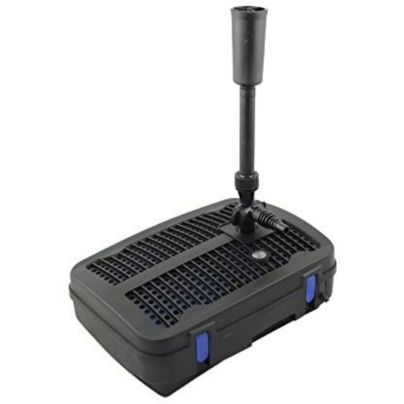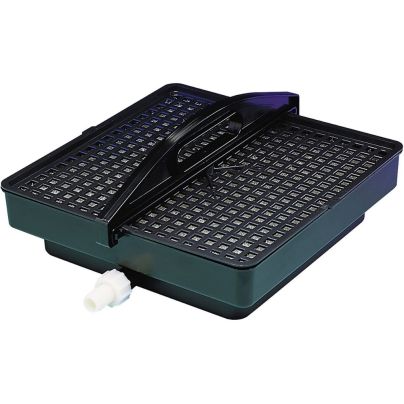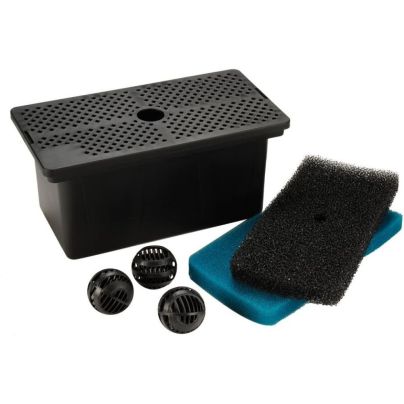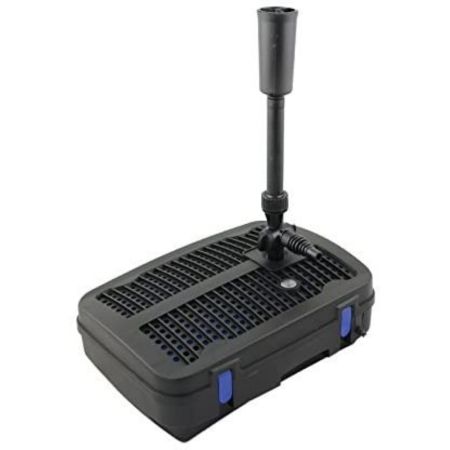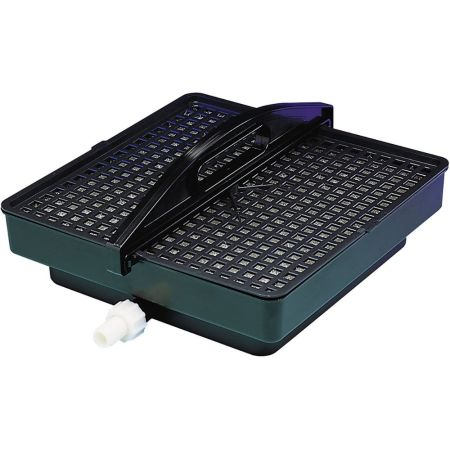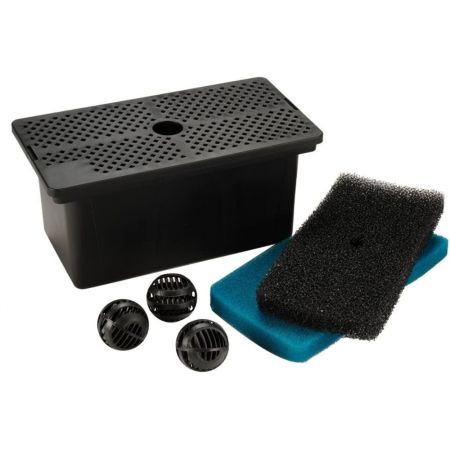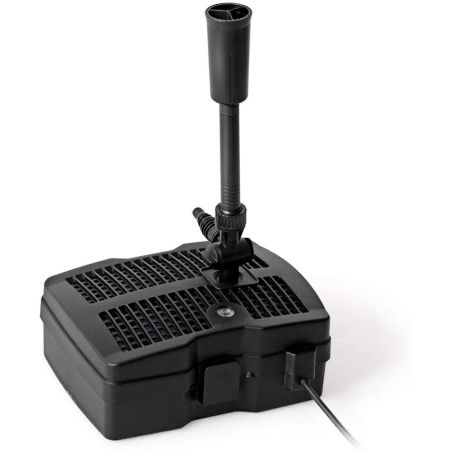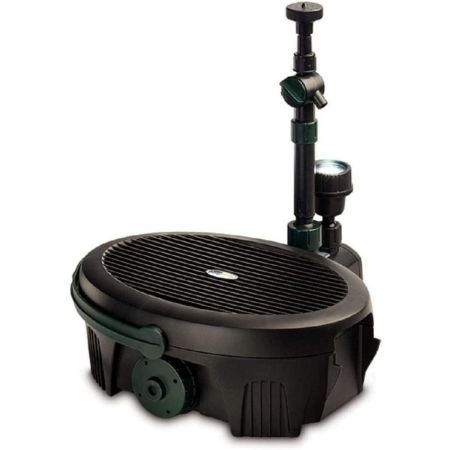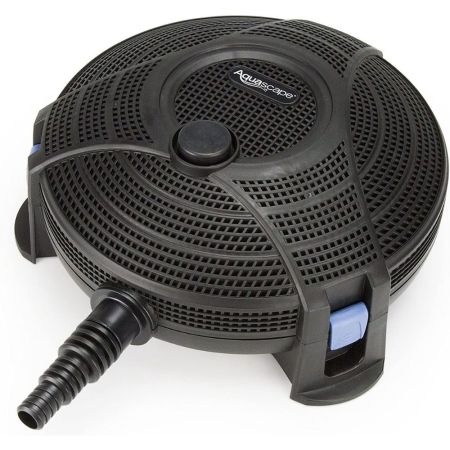We may earn revenue from the products available on this page and participate in affiliate programs. Learn More ›
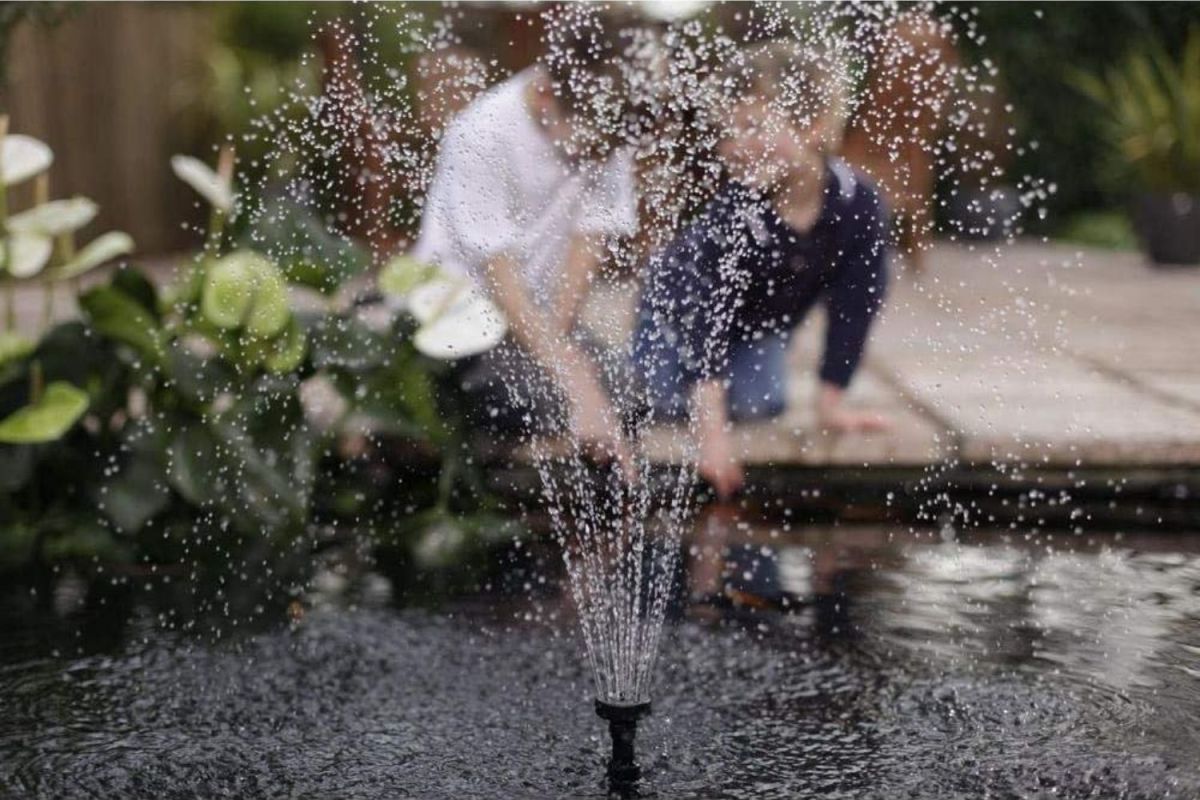
Sitting by a pond is peaceful and pleasant when the water’s clean and clear. However, once green algae, organic debris, and toxins move in, it’s hard to enjoy the water view because you’re focused on dealing with its imperfections. Take this chore off your to-do list by installing a pond filter.
Pond filters remove fish waste, plant debris, and toxins from the water before they can harm plants or fish. Cleaning the water creates a healthy pond ecosystem and makes your pond a more beautiful landscaping fixture.
When selecting the best pond filter for your situation, bear in mind that in this case, one size does not fit all. Keep reading to learn how to navigate and choose among the available options—and don’t miss our roundup of top-favorite pond filters, below!
- BEST OVERALL: CNZ ALL IN ONE Pond Filter System
- RUNNER UP: Danner 12-Inch by 12-Inch Mechanical Pond Filter
- AFFORDABLE FAVORITE: TotalPond Universal Pump Filter Box
- PERFORMANCE PICK: Goplus 4 in 1 Pond Filter Pump
- BEST FOR SMALL PONDS: Aquagarden Water Pump for Ponds
- BEST FOR KOI PONDS: Aquascape Submersible Pond Water Filter
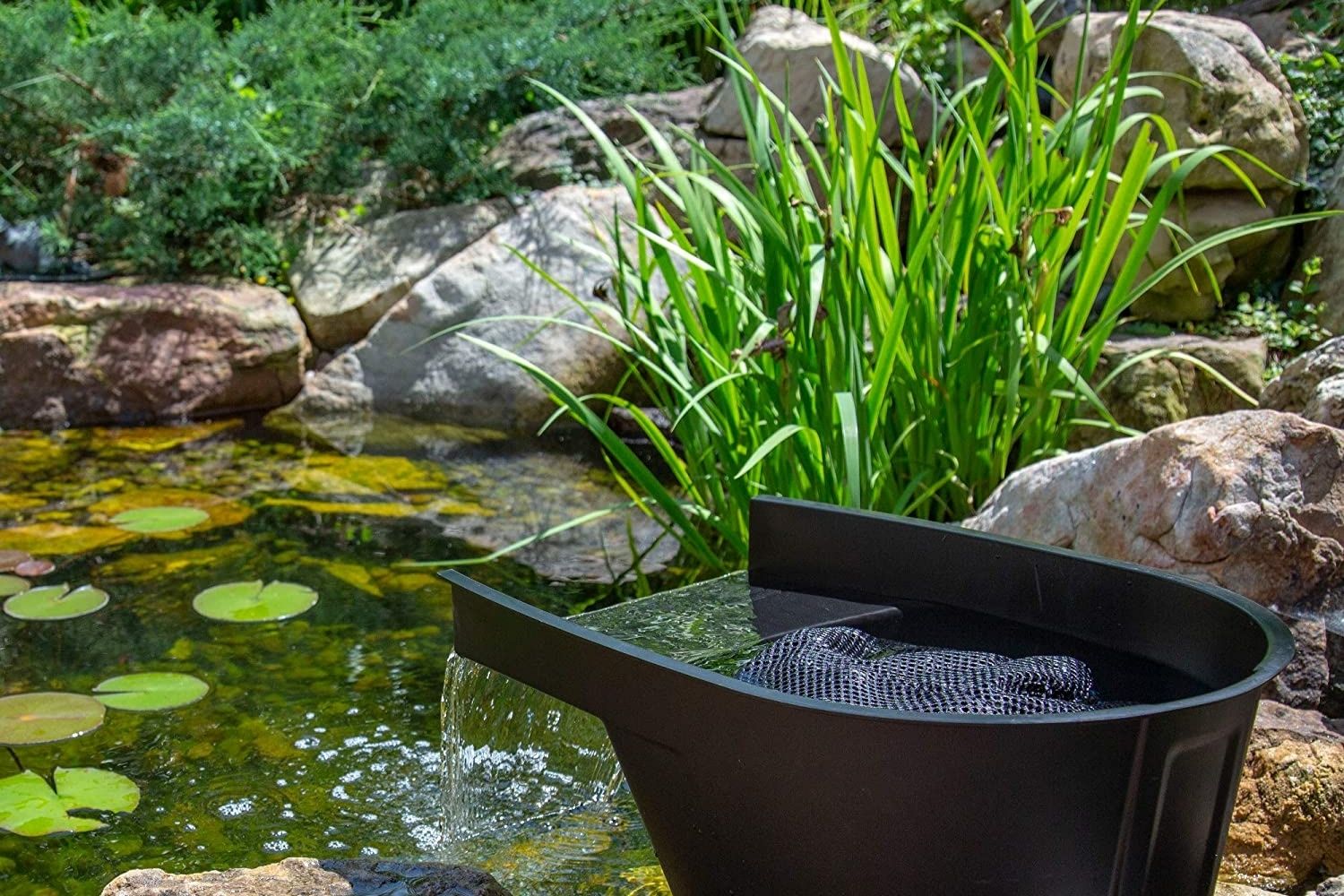
What to Consider When Choosing the Best Pond Filter
Whether the pond is a DIY pond or created by professionals, selecting the best pond filter depends on the characteristics of the pond as well as the user’s preferences. To help decide which filter to use, consider the filter features that follow.
Pond Volume
First, consider the pond’s volume. Calculate a pond’s approximate volume by multiplying its average length by the average width and average depth (in feet) to obtain its cubic feet. To convert this number to gallons, multiply it by 6.23.
All filters have a recommended maximum pond volume, which is usually indicated in gallons. If uncertain about size, err on the side of a filter that’s suitable for a larger pond. With a larger surface area, it will require less frequent cleaning than a smaller filter.
Also consider the pond’s ideal water flow rate. A pond’s water should circulate through the filter every hour or two. In other words, a 1,200-gallon pond needs a filter with a minimum flow rate of 600 gallons per hour (GPH). Waterfall filters may require a higher GPH to allow water to flow out at the desired speed.
Filter Type
Filter types include: pond skimmer, prefilter, pressurized filter, waterfall filter, and UV sterilization. Each kind has advantages and disadvantages.
- Pond skimmers continuously skim the surface of the water, drawing in floating debris. Buried or hidden at the pond’s edge, they use a pump to pull in loose debris into the skimmer’s housing container.
- Prefilters fit on the pump intake or around the pump. They collect leaves and other solid materials before they get to the filter. Some prefilters allow the pump’s discharge to supply a fountainhead or waterfall.
- Pressurized filters are sealed and use a pressurized filter directly fed from a pump in the pond. Water flows through these filters more quickly than through other types of filters. Water discharge from these filters is also under pressure. These strong filters, suitable for medium or large ponds, are easy to camouflage by hiding them behind plants or burying them in the ground.
- Waterfall filters are built into a waterfall spillway or divert clean water discharge to a spillway. The flow rate required for these filters depends on the visual effect desired and the waterfall’s width. A filter with an incorporated spillway gives the water a place to pool. Some models don’t have enough interior space to incorporate effective filter media, such as foam pads or bio-balls.
- UV sterilizer lights cause single-cell algae to clump together, so they’re large enough for the filter to remove. Water pumps through a UV clarifier before it enters a biological filter, eliminating green water and reducing harmful bacteria.
Submersible vs. External
Submersible filters go directly inside the pond. Filter boxes house all the filtration elements; self-contained submersible units provide mechanical and biological filtration. They often incorporate a pond pump in the filter box. Easy to use, these filters must be retrieved from the bottom of the pond for cleaning, filter changes, and other maintenance.
External filters, which sit outside the pond, use pipes to remove dirty water and cycle clean water back to the pond. These filters come in a variety of shapes and sizes with varying price tags as well. They’re generally more complicated than all-in-one submersible filters, but overall, they are more effective and easier to access for maintenance. External filters suit medium to larger ponds and must be connected to a separate external or submersible pump.
Submersible and external filters use mechanical, biological, and chemical filtration (or a combination of these systems).
- Mechanical filtration draws water through foam to filter out debris.
- Biological filtration uses healthy bacteria to turn organic waste products and ammonia gas into harmless nitrites, which are a plant nutrient.
- Chemical filtration absorbs water impurities with substances like activated carbon or charcoal.
Additional Features
Some pond filters have a few extras built into their design, including special materials, light effects, thermometers, and splitters.
- Filter materials affect the pond’s clarity. Mechanical pond filters contain foam fiber and filter cotton, which perform well and last a long time. In biological filtration, filter lava helps bacterial decomposition of small harmful particles. In chemical filtration, look for activated filter carbon that absorbs the tiniest particles.
- Light effects are built into some fountainhead designs. LED spotlights shine upward, illuminating the shape and movement of the water.
- A thermometer, especially helpful in ponds with fish, may be part of an external pond filter casing.
- A splitter diverts part of the clean water output through a second pipe for a fountain and/or waterfall.
Environmental Conditions
A healthy pond has good water quality. Aquatic plants are not only attractive but they also help filter the water by absorbing toxic materials. The presence of plants and fish brings excess nutrients to the pond, and these nutrients must be removed before algae feed on them and turn the water green or create string algae.
Changing seasons also affect pond filtration. When autumn leaves fall into the pond, they disturb the pond’s ecological balance. In the winter, biological filter bacteria are not active in the cold, but they stay alive if supplied with oxygen-laden water. When cold weather hits, minimize water circulation through the filter, so the water can form in layers. The bottom layer must stay a consistent 39 degrees Fahrenheit to support pond life. Some users don’t run their pump and filter system in colder months.
Installation
An electrician may need to install a new pond filter. Submersible designs are typically quite easy to install; place them in the pond and plug them in. Most come in an all-in-one casing, including a pump, making installation relatively simple. External filters don’t come with a pump, so they must be purchased separately. When installing external filters, remember to place the pump inlet as far from the filter discharge as possible. This distance maximizes water circulation within the pond.
When installing a pond filter, set the correct water flow rate for the filter. If the flow rate exceeds the filter’s maximum GPH, the filter may overflow or become damaged.
Maintenance
After installing a pond filter, follow the manufacturer’s maintenance guidelines for cleaning and replacing filters and UV bulbs. All filters require regular maintenance for optimal performance.
Some external pond filters have a quick-clean function that helps with weekly maintenance. Press a button to keep the filter clean until it’s time to wash it thoroughly.
To properly clean the filter, disassemble it regularly and clean out the mechanical filtration foams. All foams, brushes, and filter media should be cleaned in a bucket of pond water. Don’t use tap water; it contains chlorine and chloramine, which kill healthy bacteria.
Our Top Picks
The top picks for the best pond filter appear below, selected according to these considerations. Each pond is unique, and this list includes the best pond filters across various categories.
Best Overall
CNZ ALL IN ONE Pond Filter System
See ItCNZ’s pond filter kit, a good choice for small- to medium-size ponds, comes with all the components required to keep a pond clean, including the pump. The package contains a UV sterilizer with a maximum flow rate of 660 GPH; a large, coarse filter foam; and three biological filter media baskets.
This filter features a submersible design, which helps disguise it. This pond filter comes with three fountain attachments, which spout water in various patterns, and a splitter so users can divert the system to a waterfall. Both additional features are flow-rate adjustable.
The CNZ system comprises the single-unit system, a power cable, and four removable side clips, which make it easy to access and maintain the filter media.
Runner Up
Danner 12-Inch by 12-Inch Mechanical Pond Filter
See ItThis Danner pond filter’s carbon and polyester media uses mechanical, biological, and chemical filtration to clean pond water. Powered by charcoal, it includes a coarse filter pad and an activated carbon filter pad.
With 0.75-inch inner diameter tubing and fittings, the Danner connects to the intake side of a pump (not included) and has a quick-disconnect function. The filter box has a locking handle, which stabilizes the filter as water pumps through. The filter cartridge simply snaps into place.
Affordable Favorite
TotalPond Universal Pump Filter Box
See ItTotalPond’s submersible pond filter, designed for ponds with a 500-gallon maximum capacity, deploys layers of filtration to keep water clear. A coarse black filter traps larger debris, a fine blue filter catches smaller particles, and multiple bio-balls contain helpful bacteria to promote a healthy ecosystem.
TotalPond’s pieces connect quite easily. This setup doesn’t come with a pump, but it should work with almost all small pond pumps. A fountainhead kit is available for separate purchase.
Performance Pick
Goplus 4 in 1 Pond Filter Pump
See ItFor ponds with a maximum capacity of around 600 gallons, the Goplus pond filter kit employs an internal 9-watt UV lamp to improve water quality and cleanliness. It contains a viewing port that shows whether the lamp is working. The filter has a coarse foam filter to catch debris and also three additional filter baskets, all of which help keep the pond water clear.
The filter kit has two modes: pumping and fountain. The pump includes a magnetic ceramic rotator that increases the system’s strength and energy efficiency and a regulator valve that controls the water flow. To operate in fountain mode, attach one of the three fountain heads to the extendable fountain pole to spray water in the desired pattern.
To access the system for cleaning, remove the small screw on the bottom of the unit. The Goplus 660 GPH has an IPX8 waterproof rating, which means it can hold up to continuous immersion.
Best for Small Ponds
Aquagarden Water Pump for Ponds
See ItAquagarden’s combination filter and pump are suitable for ponds of up to 300 gallons. This submersible unit also has an illuminating 1-watt LED light that shines against the fountainhead spray.
Aquagarden’s pump uses three stages of mechanical filtration to clean pond water: a coarse filter foam, medium filter foam, and a polymer wool filter pad. The product uses ceramic bio media to foster healthy bacteria in the water; its built-in 5-watt UV clarifier light kills algae. All the necessary parts are included with the unit.
Best for Koi Ponds
Aquascape Submersible Pond Water Filter
See ItKoi require properly filtered water to live long, healthy lives, and Aquascape’s submersible pond filter can keep koi ponds of up to 800 gallons clean. It uses biological filtration to ensure healthy bacteria are among the fish; its ceramic filtration rings provide enough surface area for healthy bacteria to colonize.
Mechanical filtration is also part of the Aquascape pond filter. The filter’s cage has a large surface area with small openings to prevent large debris from clogging it, and it’s easy to remove for maintenance. Its pre-filtration sponge pack prevents smaller debris from damaging the pump impeller, which in turn reduces pump maintenance and disturbance to the koi. Its threaded water intake and multi-hose adapter are compatible with most pond pumps.
FAQs About Pond Filters
After installing a backyard pond, you may wonder what to do to help keep the water clean. Selecting the right pond filter is the first step, but getting the most out of it and taking proper care of the filter stretches your investment further. Some frequently asked questions and answers about pond filters follow.
Q. How much time does it take to filter my pond?
Depending on the pond’s volume, it can take a few days to a couple of weeks for the pond water to clear up once the pond filter is installed.
Q. Is a prefilter necessary?
Prefilters are less important in smaller ponds. In larger ponds, however, they’re useful because large ponds produce more debris.
Q. Does a small pond need a filter?
If you don’t intend to have fish in the pond or you’re creating a wildlife pond as an ecosystem for animals like frogs, turtles, insects, and birds, you may choose not to have a filter. Still, you should have a source of aeration, such as a pump. If you don’t use a filter, make sure algae doesn’t take over the pond by installing plants that feed off it.
Q. What is the best koi pond filter system?
Koi pond filters should use biological filtration; one of the best is the Aquascape Submersible Pond Water Filter.
Q. How often should I clean my pond filter?
In the first 6 weeks, a new filter should be cleaned twice a week until it’s biologically mature. After that, cleaning the filter every week should be sufficient.
